|
How to find the Angina Template
AAA Home

Master Tool Bar Icon
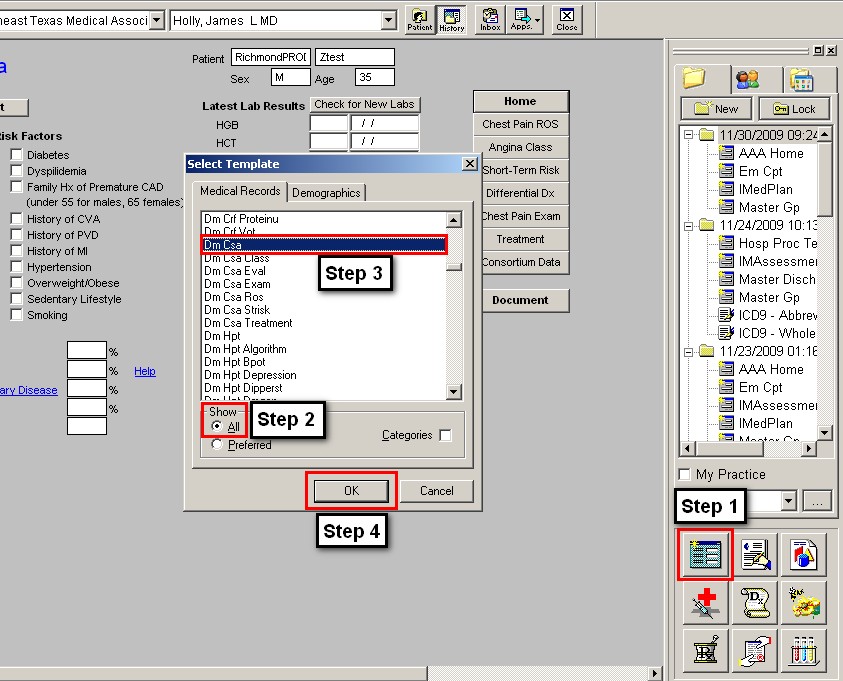
- When the Template button is clicked you will be presented with the preference list.
- If the Angina Template is listed as one of your preferences, select it.
- If it is not one of your preferences, select the All radio button and scroll down until you find it in the list. Then you may select the template by either double-clicking on the name or single click on the name (so that it is highlighted in blue) and then click the OK button.
NOTE: For more on how to set up your preferences, Click Here
This suite consists of the following set of templates:
- Chronic Stable Angina Master Template
- Chest Pain Review of Systems
- Angina Class
- Short Term Risk Level
- Differential Dx
- Chest Pain Exam
- Treatment
- Consortium Data
- Document
Angina Master Template
At the top is the patient’s name, gender and age.
Snapshot -- Beneath the template name is a button entitled, Snapshot. This pop-up summarizes the Type of Chest Pain, the Type of Angina and the CCSC (Canadian Cardiovascular Society Classification) Angina Class. This data is collected from the provider’s completion of the Angina suite of templates. It serves as a quick review of the patient’s angina status and it prints on the chart note.
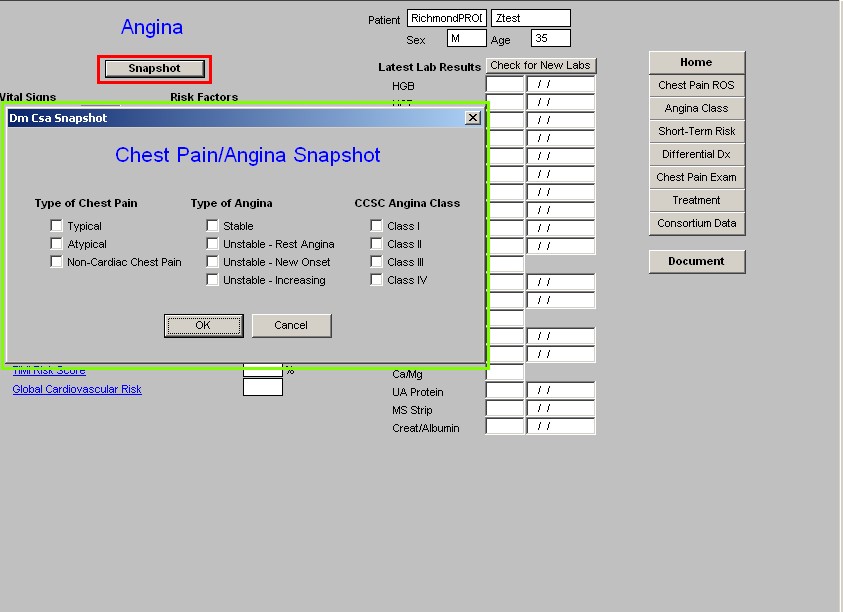
The template is organized into four columns.
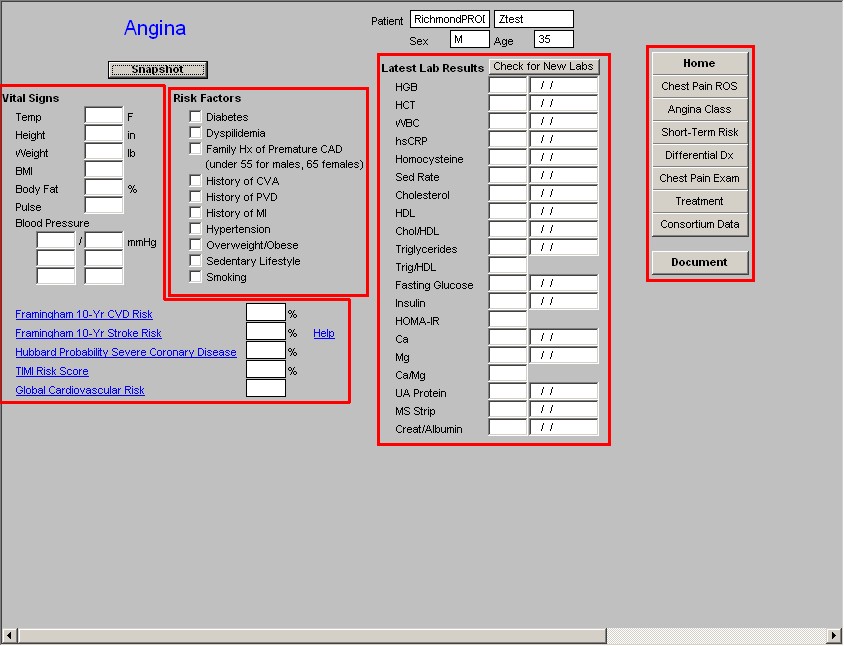
Column 1
- Vital Signs
- Framingham 10-Yr CVD Risk – this links you to the Framingham template. For instructions on its use see the Framingham tutor.
- Framingham 10-Yr Stroke Risk – same as above
- Hubbard Probability Severe Coronary Disease – see below
- TIMI Risk Score – see below
- Global Cardiovascular Risk – this links you to the Framingham template. For an explanation of this score and its use, see the Framingham tutor.
Hubbard Probability Severe Coronary Disease
This button launches a pop-up which estimates the probability of three-vessel or left main coronary artery disease and calculates a recommended intervention on the basis of age and five risk factors. If the calculated risk exceeds 50%, the recommendation, “Patient should have cardiac catherization,” will appear on the pop-up.

TIMI Risk Score
This pop-up integrates historical factors, frequency of symptoms, electrocardiographic findings and cardiac biomarker levels to give a percent score for the risk of death, nonfatal MI, and/or need of urgent revascularization. Utilizing 6 specific risk factors and the presence of 3 or more other CAD risk factors, the TIMI score is calculated. This is useful in the risk stratification of the patient with angina pectoris.

Column 2 –
Column 3 –
- Check for New Labs
- Latest Lab Results
Column 4 –
- Navigation Buttons
- Document
Chest pain ROS Template
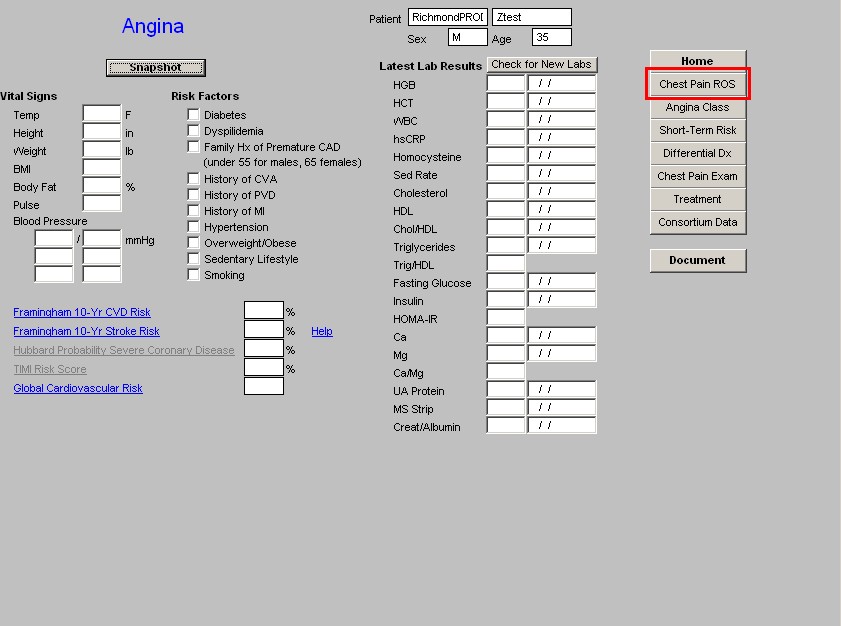
With a review of chest pain as to:
- Quality,
- Location,
- Duration,
- Aggravated By,
- Relieved By and
- Angina Equivalents,
this template calculates the most likely type of chest pain. The conclusion is stated as either:
- Typical Angina
- Atypical Angina
- Non Cardiac Chest Pain
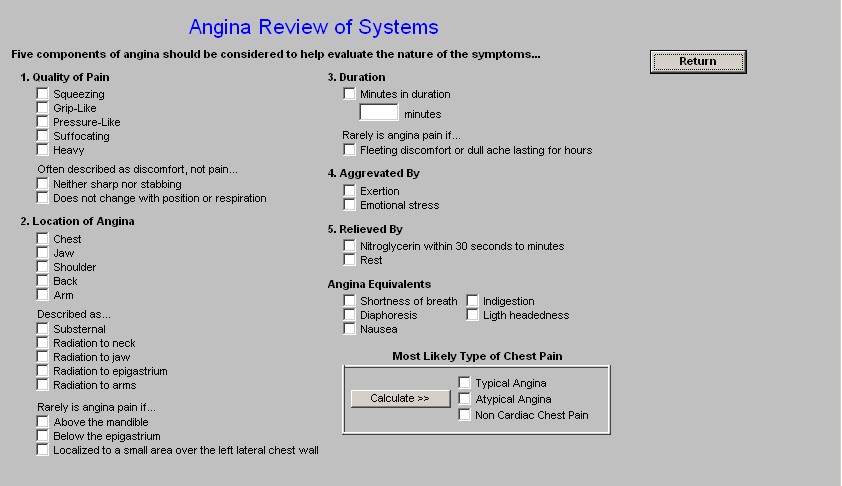
Classification of Angina Template
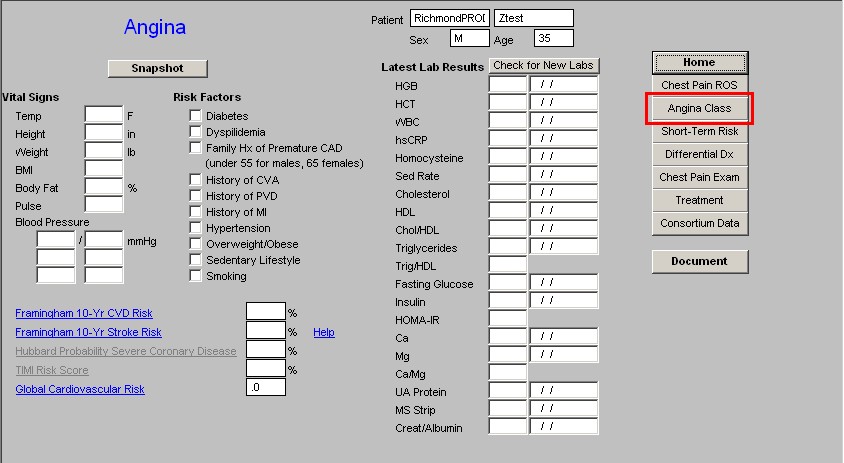
The conclusion of the previous template on the type of Angina is posted at the top of the template: typical, atypical, non cardiac chest pain.
This template makes it possible to identify the Canadian Cardiovascular Society Classification System of Angina class. The template allows for the determination of whether the patient has “stable” or “unstable” angina, gives the definitions and pathophysiology of both and then calculates the Class of angina.

Short-Term Risk Template
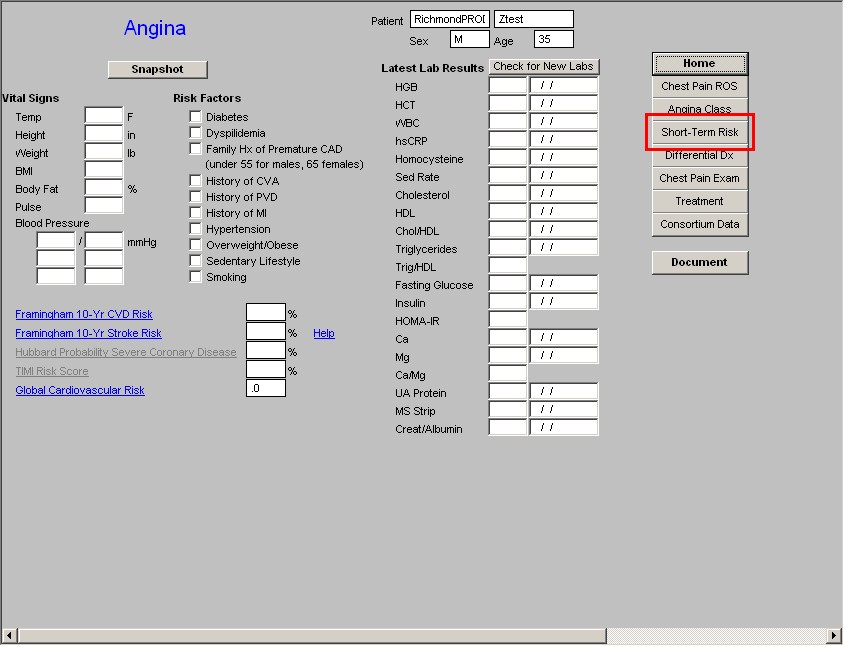
The full name of the template is “Shot-Term Risk of Death or Non Fatal MI in Patients with Unstable Angina.” Through the selection of the applicable characteristics from a list of 17, a score is calculated which is displayed as Low risk, Intermediate Risk or High Risk of Death or Non Fatal MI.
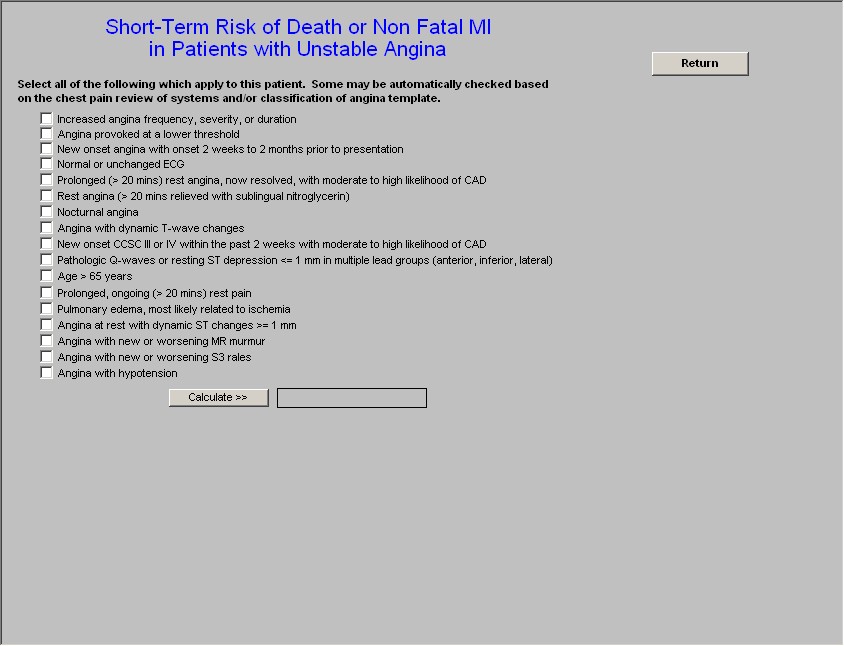
Differential Dx Template
The full name of this template is “Differential Diagnosis to Angina for Patients with Chest Pain.” This template lists 5 body systems which have conditions with presentations which can mimic angina. By reviewing this template, it is possible to consider other potential causes of chest pain in the differential diagnosis.
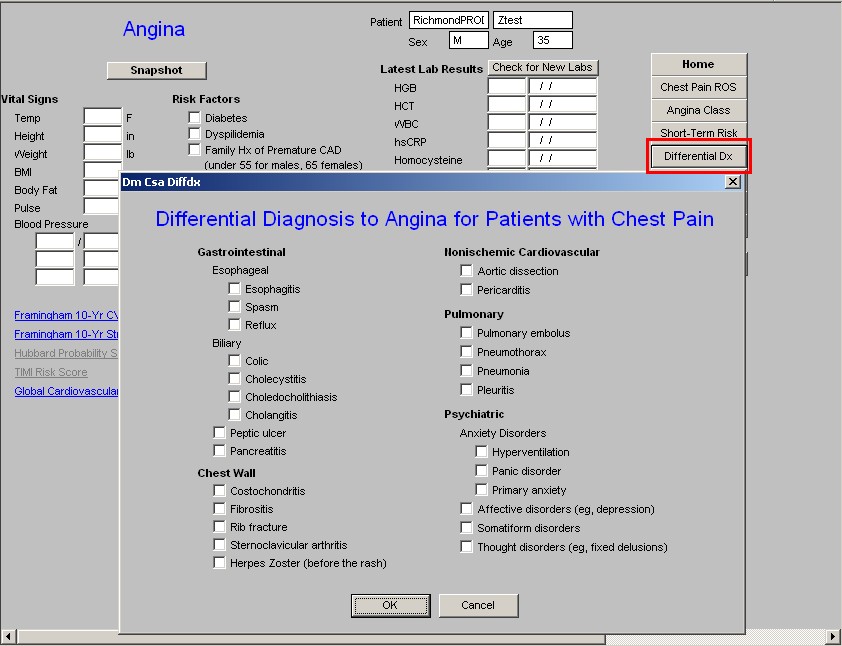
Chest Pain Exam Template

This template presents a focused physical exam for coronary artery disease, including
- The follow are predictive of CAD
- Non-coronary atherosclerotic disease increases likelihood of CAD
- CAD Risk Factors
- Palpation of chest Wall for tender areas
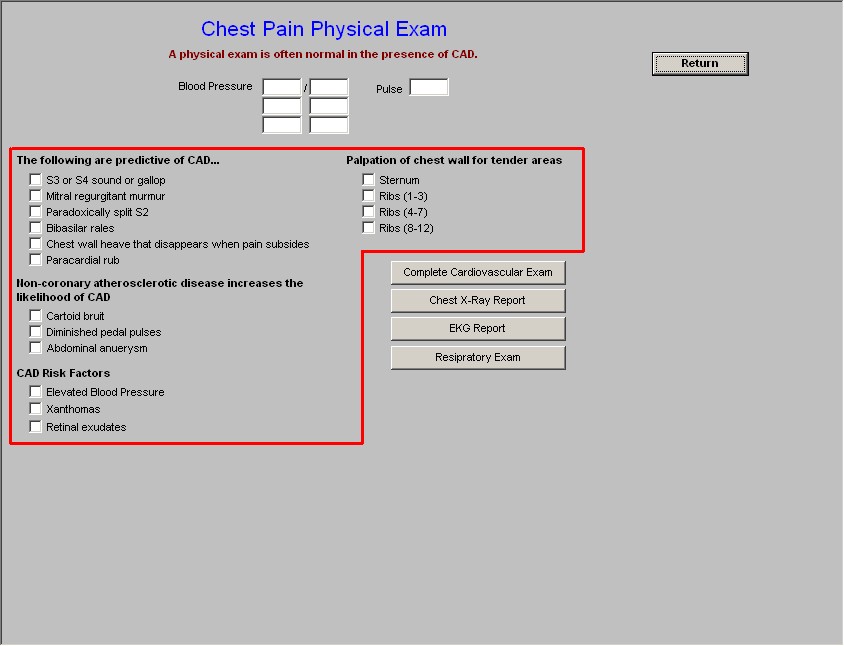
- Complete Cardiovascular Exam
- Chest X-Ray Report
- EKG Report
- Respiratory Exam
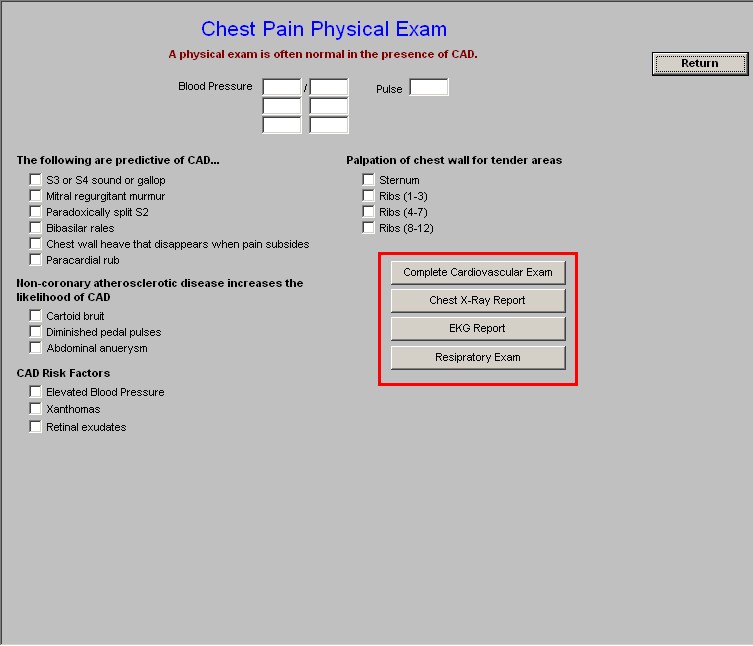
Angina Treatment Template
Medication Information
This presents seven categories of medications for the treatment of angina. When one category is selected, the medications in that category appear. When you select one of the medications, information on that medication will be displayed in windows entitled, General, Dosing, Contraindications, Interactions, Pregnancy and Precautions. This is a kind of electronic PDR.
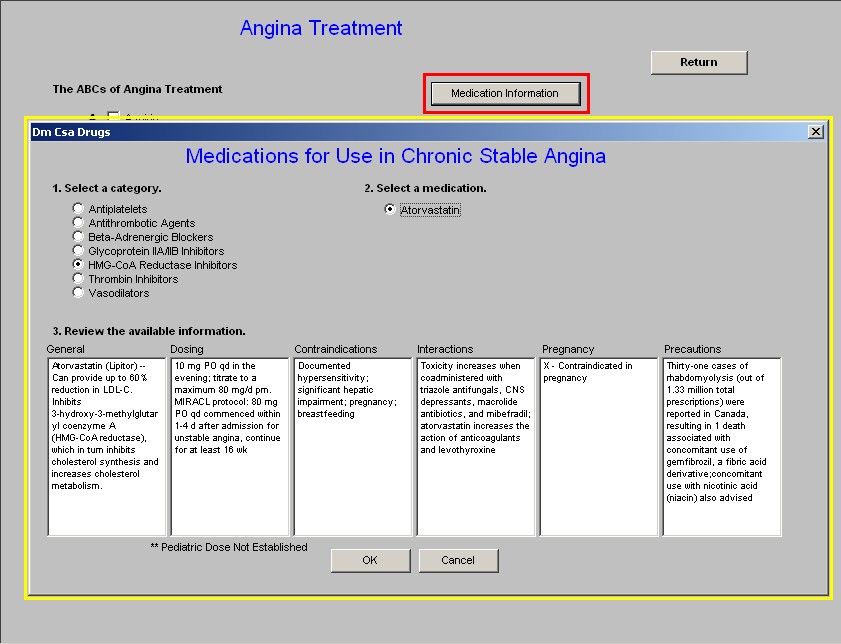
The ABCs of Angina Treatment
Because they are integral to the treatment of Angina, there are links here to
Hypertension, Smoking, Lipids, Diabetes and Exercise.
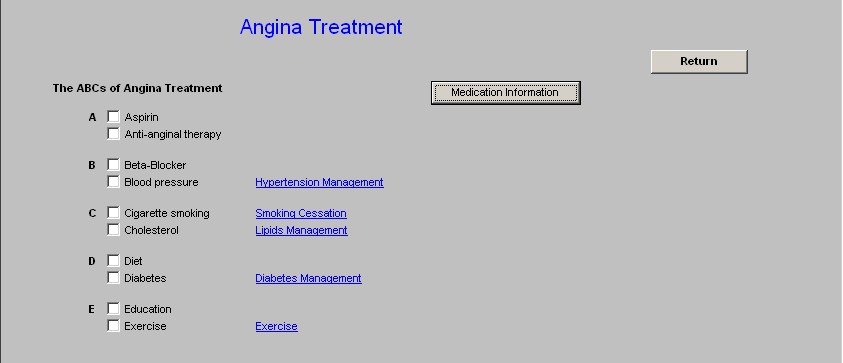
Consortium Data Set
The Physician Consortium for Performance Improvement Data Set for Chronic Stable Angina defines what quality care for chronic stable angina is. This template gathers all of that information together. The questions are:
- Is the patient currently on antiplatelet therapy?
- Is the patient receiving a statin?
- Is the patient receiving a beta-blocker?
- Does the patient smoke? If they smoke have they been given counsel to stop?
- Documentation of standardized angina scale or assessment?
There are three help buttons:
- Angina – this displays 8 principles for the treatment of chronic stable angina.
- CHF Classification – this defines the four classes of CHF.
- Canadian Class – this defines the Canadian Cardiovascular Society angina classes.
This template also displays the Cardiac History material including:
- MI
- Stents
- CABG
- PTCA
- Permanent Pacemaker
- Framingham Cardiovascular Risk
- Framingham Stroke Risk
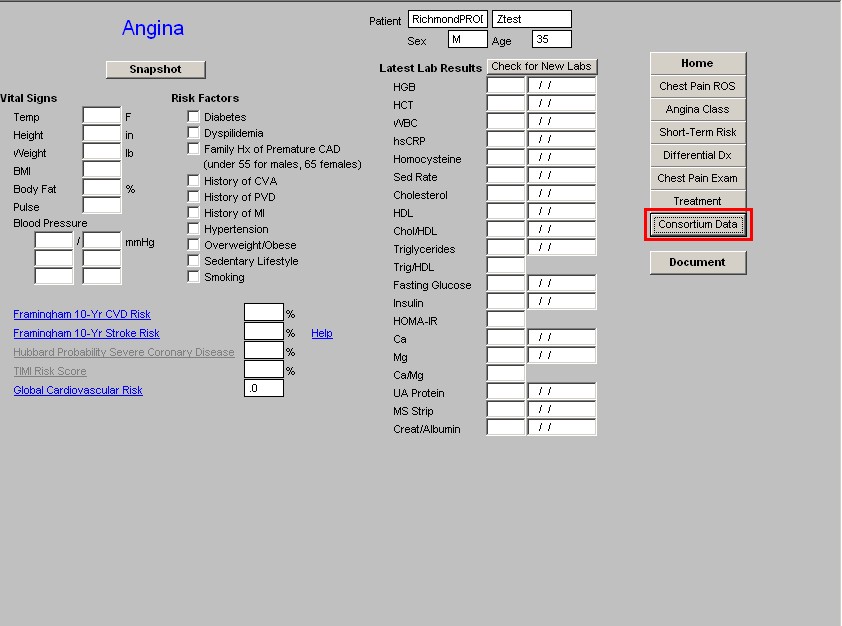

|